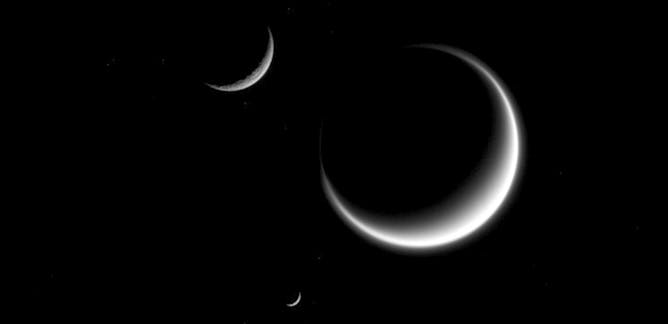
Articles sur Astronomy
Affichage de 1 à 20 de 813 articles

It’s not a competition, but if it were, Saturn would be winning.

Structures aligned with solar events served various purposes: science, farming, religion and even politics.

Hubble’s technical issues continue. But through some clever engineering, the telescope can continue operations with just 1 gyroscope.

Astronomers Vicent Martínez and Bernard Jones explain the mystery of the Hubble tension, and why it matters so much for our understanding of the universe, on The Conversation Weekly podcast.

One hundred years ago, one star changed our view of the universe, proving that the Andromeda “nebula” was a galaxy like our Milky Way.

An interstellar probe could help scientists answer fundamental questions about how the Sun influences Earth, space and other planets in the solar system.

It’s hard to look for something you’ve never seen before – and that might not even exist. But you have to start somewhere.

Analysis of two major cosmic blasts deepens the mystery of where the universe’s ‘heavy’ elements come from.

The best spots on the Moon for lunar bases are the same spots where scientists want to build telescopes − can these two interests coexist?

2024 marks 25 years since NASA’s Chandra X-ray Observatory started detecting X-rays from energetic astronomical events.

Studying theoretical, fast-spinning black holes is helping physicists understand more about the elusive black holes out in the universe.

Research on one exoplanet that’s rapidly losing its atmosphere is hinting to scientists why exoplanets tend to look a certain way.

A new study shines light on the link between the Milky Way and the ancient Egyptian sky goddess Nut

It’s not easy to collect rocks on a budget when the rocks are 140 million miles away.

MeerKAT has made remarkable contributions to South African and international science.

When astronomers focused on the galaxy NGC 4383, they didn’t expect the data to be so spectacular. This is the first detailed map of gas flowing from this galaxy as stars burst within.

If you look carefully at the night sky, you may spot this fuzzy visitor with the naked eye – but binoculars will help.

Saturn’s moon Enceladus has geysers shooting tiny grains of ice into space. These grains could hold traces of life − but researchers need the right tools to tell.

When scientists observed planets revolved around the Sun, they posited we were now like other planets. And if other planets were like Earth, then they most likely also had inhabitants.

Where specialized algorithms fail to classify star-borne pulses, human volunteers with just a little training can step in.
